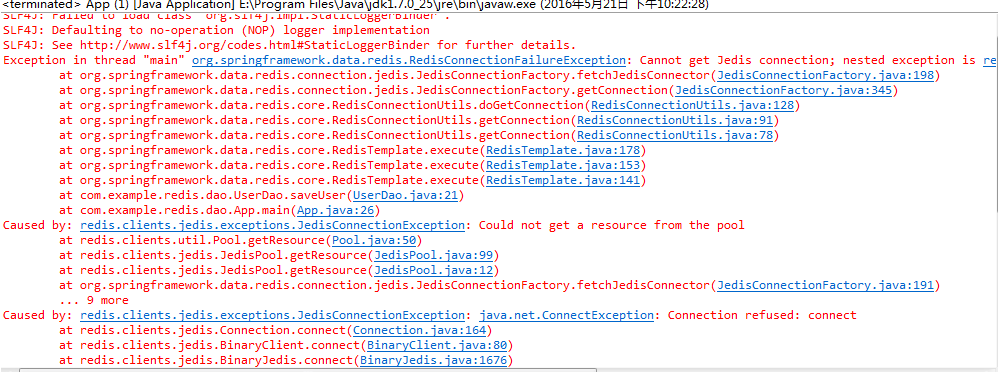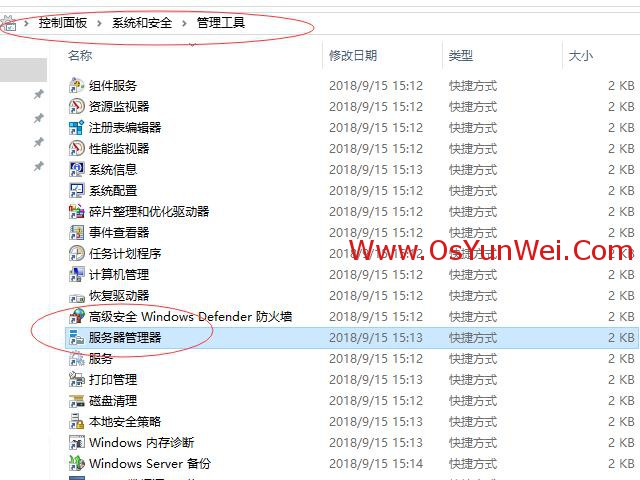一)URL代理请求
该方式请求有两种代理方式。
方式一:使用该方式代理之后,之后的所有接口都会使用代理请求
|
1
2
3
4
5
6
7
|
// 对http开启全局代理
System.setProperty("http.proxyHost", "192.168.1.1");
System.setProperty("http.proxyPort", "80");
// 对https开启全局代理
System.setProperty("https.proxyHost", "192.168.1.1");
System.setProperty("https.proxyPort", "80");
|
方式二:适用于只有部分接口需要代理请求场景
|
1
2
3
4
5
6
7
8
9
10
|
Proxy proxy = new Proxy(Type.HTTP, new InetSocketAddress("192.168.1.1", 80));
HttpURLConnection conn = null;
try {
URL url = new URL("http://localhost:8080/ouyangjun");
conn = (HttpURLConnection) url.openConnection(proxy);
} catch (MalformedURLException e) {
e.printStackTrace();
} catch (IOException e) {
e.printStackTrace();
}
|
二)无参数GET请求
方法解析:
HttpGetUtils.doGetNoParameters(String requestURL, String proxyHost, Integer proxyPort);
requestURL:请求路径,必填
proxyHost:代理IP,即服务器代理地址,可为null
proxyPort:代理端口,可为null
说明:一般本地测试几乎是不会用代理的,只有服务器用代理方式请求比较多。
实现源码:
|
1
2
3
4
5
6
7
8
9
10
11
12
13
14
15
16
17
18
19
20
21
22
23
24
25
26
27
28
29
30
31
32
33
34
35
36
37
38
39
40
41
42
43
44
45
46
47
48
49
50
51
52
53
54
55
56
57
58
59
60
61
62
63
64
65
66
67
68
69
70
71
72
73
74
75
76
77
78
79
80
81
82
83
84
85
86
87
88
89
90
91
92
93
94
95
96
97
98
99
100
|
package com.ouyangjun.wechat.utils;
import java.io.BufferedReader;
import java.io.IOException;
import java.io.InputStream;
import java.io.InputStreamReader;
import java.net.HttpURLConnection;
import java.net.InetSocketAddress;
import java.net.MalformedURLException;
import java.net.Proxy;
import java.net.Proxy.Type;
import java.net.URL;
/**
* http请求工具类
* @author ouyangjun
*/
public class HttpGetUtils {
/**
* http get请求, 不带参数
* @param requestURL
* @param method
* @return
*/
public static String doGetNoParameters(String requestURL, String proxyHost, Integer proxyPort) {
// 记录信息
StringBuffer buffer = new StringBuffer();
HttpURLConnection conn = null;
try {
URL url = new URL(requestURL);
// 判断是否需要代理模式请求http
if (proxyHost != null && proxyPort != null) {
// 如果是本机自己测试, 不需要代理请求,但发到服务器上的时候需要代理请求
// 对http开启全局代理
//System.setProperty("http.proxyHost", proxyHost);
//System.setProperty("http.proxyPort", proxyPort);
// 对https开启全局代理
//System.setProperty("https.proxyHost", proxyHost);
//System.setProperty("https.proxyPort", proxyPort);
// 代理访问http请求
Proxy proxy = new Proxy(Type.HTTP, new InetSocketAddress(proxyHost, proxyPort));
conn = (HttpURLConnection) url.openConnection(proxy);
} else {
// 原生访问http请求,未代理请求
conn = (HttpURLConnection) url.openConnection();
}
// 设置请求的属性
conn.setDoOutput(true); // 是否可以输出
conn.setRequestMethod("GET"); // 请求方式, 只包含"GET", "POST", "HEAD", "OPTIONS", "PUT", "DELETE", "TRACE"六种
conn.setConnectTimeout(60000); // 最高超时时间
conn.setReadTimeout(60000); // 最高读取时间
conn.setConnectTimeout(60000); // 最高连接时间
// 读取数据
InputStream is = null;
InputStreamReader inputReader = null;
BufferedReader reader = null;
try {
is = conn.getInputStream();
inputReader = new InputStreamReader(is, "UTF-8");
reader = new BufferedReader(inputReader);
String temp;
while ((temp = reader.readLine()) != null) {
buffer.append(temp);
}
} catch (Exception e) {
System.out.println("HttpGetUtils doGetNoParameters error: " + e);
} finally {
try {
if (reader != null) {
reader.close();
}
if (inputReader != null) {
inputReader.close();
}
if (is != null) {
is.close();
}
} catch (IOException e) {
System.out.println("HttpGetUtils doGetNoParameters error: " + e);
}
}
} catch (MalformedURLException e) {
e.printStackTrace();
} catch (IOException e) {
e.printStackTrace();
} finally {
// 当http连接空闲时, 释放资源
if (conn != null) {
conn.disconnect();
}
}
// 返回信息
return buffer.length()==0 ? "" : buffer.toString();
}
}
|
三)带参数POST请求
方法解析:
HttpPostUtils.doPost(String requestURL, String params, String proxyHost, Integer proxyPort);
requestURL:请求路径,必填
params:请求参数,必填,数据格式为JSON
proxyHost:代理IP,即服务器代理地址,可为null
proxyPort:代理端口,可为null
说明:一般本地测试几乎是不会用代理的,只有服务器用代理方式请求比较多。
实现源码:
|
1
2
3
4
5
6
7
8
9
10
11
12
13
14
15
16
17
18
19
20
21
22
23
24
25
26
27
28
29
30
31
32
33
34
35
36
37
38
39
40
41
42
43
44
45
46
47
48
49
50
51
52
53
54
55
56
57
58
59
60
61
62
63
64
65
66
67
68
69
70
71
72
73
74
75
76
77
78
79
80
81
82
83
84
85
86
87
88
89
90
91
92
93
94
95
96
97
98
99
100
101
102
103
104
105
106
107
108
109
110
111
112
113
114
115
116
117
118
119
120
121
122
123
124
|
package com.ouyangjun.wechat.utils;
import java.io.BufferedReader;
import java.io.IOException;
import java.io.InputStream;
import java.io.InputStreamReader;
import java.io.OutputStream;
import java.net.HttpURLConnection;
import java.net.InetSocketAddress;
import java.net.MalformedURLException;
import java.net.Proxy;
import java.net.Proxy.Type;
import java.net.URL;
/**
* http请求工具类
* @author ouyangjun
*/
public class HttpPostUtils {
/**
* http post请求, 带参数
* @param requestURL
* @param params
* @return
*/
public static String doPost(String requestURL, String params, String proxyHost, Integer proxyPort) {
// 记录信息
StringBuffer buffer = new StringBuffer();
HttpURLConnection conn = null;
try {
URL url = new URL(requestURL);
// 判断是否需要代理模式请求http
if (proxyHost != null && proxyPort != null) {
// 如果是本机自己测试, 不需要代理请求,但发到服务器上的时候需要代理请求
// 对http开启全局代理
//System.setProperty("http.proxyHost", proxyHost);
//System.setProperty("http.proxyPort", proxyPort);
// 对https开启全局代理
//System.setProperty("https.proxyHost", proxyHost);
//System.setProperty("https.proxyPort", proxyPort);
// 代理访问http请求
Proxy proxy = new Proxy(Type.HTTP, new InetSocketAddress(proxyHost, proxyPort));
conn = (HttpURLConnection) url.openConnection(proxy);
} else {
// 原生访问http请求,未代理请求
conn = (HttpURLConnection) url.openConnection();
}
// 设置请求的属性
conn.setDoOutput(true); // 是否可以输出
conn.setRequestMethod("POST"); // 请求方式, 只包含"GET", "POST", "HEAD", "OPTIONS", "PUT", "DELETE", "TRACE"六种
conn.setConnectTimeout(60000); // 最高超时时间
conn.setReadTimeout(60000); // 最高读取时间
conn.setConnectTimeout(60000); // 最高连接时间
conn.setDoInput(true); // 是否可以输入
if (params != null) {
// 设置参数为json格式
conn.setRequestProperty("Content-type", "application/json");
// 写入参数信息
OutputStream os = conn.getOutputStream();
try {
os.write(params.getBytes("UTF-8"));
} catch (Exception e) {
System.out.println("HttpPostUtils doPost error: " + e);
} finally {
try {
if (os != null) {
os.close();
}
} catch (IOException e) {
System.out.println("HttpPostUtils doPost error: " + e);
}
}
}
// 读取数据
InputStream is = null;
InputStreamReader inputReader = null;
BufferedReader reader = null;
try {
is = conn.getInputStream();
inputReader = new InputStreamReader(is, "UTF-8");
reader = new BufferedReader(inputReader);
String temp;
while ((temp = reader.readLine()) != null) {
buffer.append(temp);
}
} catch (Exception e) {
System.out.println("HttpPostUtils doPost error: " + e);
} finally {
try {
if (reader != null) {
reader.close();
}
if (inputReader != null) {
inputReader.close();
}
if (is != null) {
is.close();
}
} catch (IOException e) {
System.out.println("HttpPostUtils doPost error: " + e);
}
}
} catch (MalformedURLException e) {
e.printStackTrace();
} catch (IOException e) {
e.printStackTrace();
} finally {
// 当http连接空闲时, 释放资源
if (conn != null) {
conn.disconnect();
}
}
// 返回信息
return buffer.length()==0 ? "" : buffer.toString();
}
}
|
四)Http模拟测试
本案例是使用了微信公众号两个接口作为了测试案例。
appID和appsecret需要申请了微信公众号才能获取到。
|
1
2
3
4
5
6
7
8
9
10
11
12
13
14
15
16
17
18
19
20
21
22
23
24
25
26
27
28
29
30
31
32
33
34
35
36
37
38
39
40
41
42
43
44
45
46
47
|
package com.ouyangjun.wechat.test;
import com.ouyangjun.wechat.utils.HttpGetUtils;
import com.ouyangjun.wechat.utils.HttpPostUtils;
public class TestHttp {
private final static String WECHAT_APPID=""; // appid, 需申请微信公众号才能拿到
private final static String WECHAT_APPSECRET=""; // appsecret, 需申请微信公众号才能拿到
public static void main(String[] args) {
// 获取微信公众号token
getWeChatToken();
// 修改用户备注信息
String token = "31_1uw5em_HrgkfXok6drZkDZLKsBfbNJr9WTdzdkc_Tdat-9tpOezWsNI6tBMkyPe_zDHjErIS1r0dgnTpT5bfKXcASShJVhPqumivRP21PvQe3Cbfztgs1IL2Jpy7kw3Y09bC1urlWzDA52mtEDGcADAVUX";
String openid = "oCh4n0-6JKQpJgBOPA5tytoYb0VY";
updateUserRemark(token, openid);
}
/**
* 根据appid和appsecret获取微信token,返回json格式数据,需自行解析
* @return
*/
public static String getWeChatToken() {
String requestURL = "https://api.weixin.qq.com/cgi-bin/token?grant_type=client_credential&appid="+WECHAT_APPID+"&secret="+WECHAT_APPSECRET;
String token = HttpGetUtils.doGetNoParameters(requestURL, null, null);
System.out.println("wechat token: " + token);
return token;
}
/**
* 修改用户备注,返回json格式数据,需自行解析
* @param token
* @param openid
* @return
*/
public static String updateUserRemark(String token, String openid) {
String reuqestURL = "https://api.weixin.qq.com/cgi-bin/user/info/updateremark?access_token="+token;
// 封装json参数
String jsonParams = "{\\"openid\\":\\""+openid+"\\",\\"remark\\":\\"oysept\\"}";
String msg = HttpPostUtils.doPost(reuqestURL, jsonParams, null, null);
System.out.println("msg: " + msg);
return jsonParams;
}
}
|
补充知识:Java HttpURLConnection post set params 设置请求参数的三种方法 实践总结
我就废话不多说了,大家还是直接看代码吧~
|
1
2
3
4
5
6
7
8
9
10
11
12
13
14
15
16
17
18
19
20
21
22
23
24
25
26
27
28
29
30
31
|
/**
* the first way to set params
* OutputStream
*/
byte[] bytesParams = paramsStr.getBytes();
// 发送请求params参数
OutputStream outStream=connection.getOutputStream();
outStream.write(bytesParams);
outStream.flush();
/**
* the second way to set params
* PrintWriter
*/
PrintWriter printWriter = new PrintWriter(connection.getOutputStream());
//PrintWriter printWriter = new PrintWriter(new OutputStreamWriter(connection.getOutputStream(),"UTF-8"));
// 发送请求params参数
printWriter.write(paramsStr);
printWriter.flush();
/**
* the third way to set params
* OutputStreamWriter
*/
OutputStreamWriter out = new OutputStreamWriter(
connection.getOutputStream(), "UTF-8");
// 发送请求params参数
out.write(paramsStr);
out.flush();
|
demo:
|
1
2
3
4
5
6
7
8
9
10
11
12
13
14
15
16
17
18
19
20
21
22
23
24
25
26
27
28
29
30
31
32
33
34
35
36
37
38
39
40
41
42
43
44
45
46
47
48
49
50
51
52
53
54
55
56
57
58
59
60
61
62
63
64
65
66
67
68
69
70
71
72
73
74
75
76
77
78
79
80
81
82
83
84
85
86
87
88
89
90
91
92
93
94
95
96
97
98
99
100
|
/**
* @param pathurl
* @param paramsStr
* @return
*/
private static String postUrlBackStr(String pathurl, String paramsStr) {
String backStr = "";
InputStream inputStream = null;
ByteArrayOutputStream baos = null;
try {
URL url = new URL(pathurl);
HttpURLConnection connection = (HttpURLConnection) url.openConnection();
// 设定请求的方法为"POST",默认是GET
connection.setRequestMethod("POST");
connection.setConnectTimeout(50000);
connection.setReadTimeout(50000);
// User-Agent IE11 的标识
connection.setRequestProperty("User-Agent", "Mozilla/5.0 (compatible; MSIE 9.0; Windows NT 6.3; Trident/7.0;rv:11.0)like Gecko");
connection.setRequestProperty("Accept-Language", "zh-CN");
connection.setRequestProperty("Connection", "Keep-Alive");
connection.setRequestProperty("Charset", "UTF-8");
/**
* 当我们要获取我们请求的http地址访问的数据时就是使用connection.getInputStream().read()方式时我们就需要setDoInput(true),
根据api文档我们可知doInput默认就是为true。我们可以不用手动设置了,如果不需要读取输入流的话那就setDoInput(false)。
当我们要采用非get请求给一个http网络地址传参 就是使用connection.getOutputStream().write() 方法时我们就需要setDoOutput(true), 默认是false
*/
// 设置是否从httpUrlConnection读入,默认情况下是true;
connection.setDoInput(true);
// 设置是否向httpUrlConnection输出,如果是post请求,参数要放在http正文内,因此需要设为true, 默认是false;
connection.setDoOutput(true);
connection.setUseCaches(false);
/**
* the first way to set params
* OutputStream
*/
/* byte[] bytesParams = paramsStr.getBytes();
// 发送请求params参数
OutputStream outStream=connection.getOutputStream();
outStream.write(bytesParams);
outStream.flush();
*/
/**
* the second way to set params
* PrintWriter
*/
/* PrintWriter printWriter = new PrintWriter(connection.getOutputStream());
//PrintWriter printWriter = new PrintWriter(new OutputStreamWriter(connection.getOutputStream(),"UTF-8"));
// 发送请求params参数
printWriter.write(paramsStr);
printWriter.flush();*/
/**
* the third way to set params
* OutputStreamWriter
*/
OutputStreamWriter out = new OutputStreamWriter(
connection.getOutputStream(), "UTF-8");
// 发送请求params参数
out.write(paramsStr);
out.flush();
connection.connect();//
int contentLength = connection.getContentLength();
if (connection.getResponseCode() == 200) {
inputStream = connection.getInputStream();//会隐式调用connect()
baos = new ByteArrayOutputStream();
int readLen;
byte[] bytes = new byte[1024];
while ((readLen = inputStream.read(bytes)) != -1) {
baos.write(bytes, 0, readLen);
}
backStr = baos.toString();
Log.i(TAG, "backStr:" + backStr);
} else {
Log.e(TAG, "请求失败 code:" + connection.getResponseCode());
}
} catch (MalformedURLException e) {
e.printStackTrace();
} catch (IOException e) {
e.printStackTrace();
} finally {
try {
if (baos != null) {
baos.close();
}
if (inputStream != null) {
inputStream.close();
}
} catch (IOException e) {
e.printStackTrace();
}
}
return backStr;
}
|
以上这篇浅谈Java HttpURLConnection请求方式就是小编分享给大家的全部内容了,希望能给大家一个参考,也希望大家多多支持快网idc。
原文链接:https://blog.csdn.net/p812438109/article/details/105105188
相关文章
- ASP.NET本地开发时常见的配置错误及解决方法? 2025-06-10
- ASP.NET自助建站系统的数据库备份与恢复操作指南 2025-06-10
- 个人网站服务器域名解析设置指南:从购买到绑定全流程 2025-06-10
- 个人网站搭建:如何挑选具有弹性扩展能力的服务器? 2025-06-10
- 个人服务器网站搭建:如何选择适合自己的建站程序或框架? 2025-06-10
- 2025-07-10 怎样使用阿里云的安全工具进行服务器漏洞扫描和修复?
- 2025-07-10 怎样使用命令行工具优化Linux云服务器的Ping性能?
- 2025-07-10 怎样使用Xshell连接华为云服务器,实现高效远程管理?
- 2025-07-10 怎样利用云服务器D盘搭建稳定、高效的网站托管环境?
- 2025-07-10 怎样使用阿里云的安全组功能来增强服务器防火墙的安全性?
快网idc优惠网
QQ交流群
-
2025-05-29 40
-
2025-05-29 69
-
2025-06-04 61
-
2025-06-04 62
-
Windows Server 2025 IIS10.0+PHP(FastCGI)+MySQL环境搭建教程
2025-05-26 98











